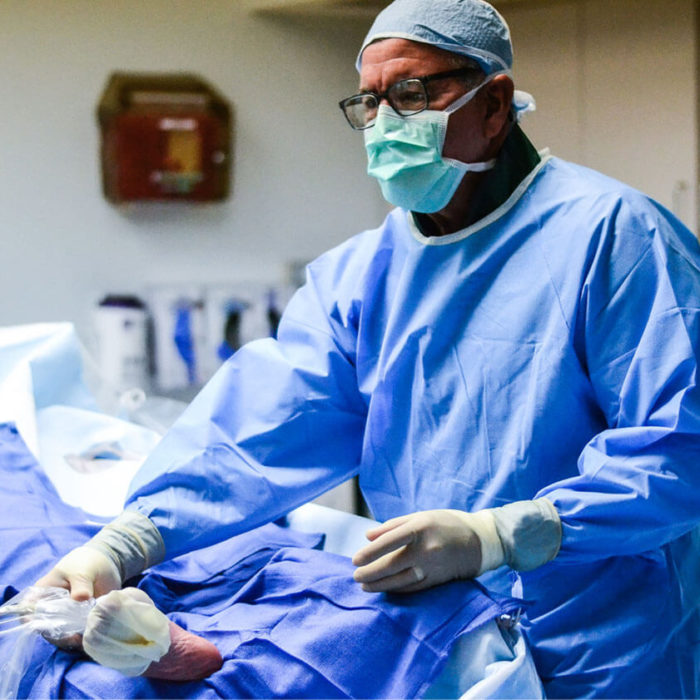PAD treatment begins with noninvasive measures. Depending on the progression of the disease, a combination of lifestyle changes and medications can help alleviate some of the associated pain–however, given that the disease will ultimately continue to progress, further treatment will eventually be needed.
The next stage of treatment would be through angiography. Typically, given that most patients with PAD aren’t diagnosed until the disease is already quite prominent, this is where treatment often begins. Through angiography, the vascular specialist is able to see inside of the arteries and begin treating the ‘stenosed’ (narrowed) areas, using x-rays and a series of catheters and wires through a small nick in the groin, leg, or foot. Treatment is administered in several ways: In the presence of plaque, arteries can become stiff and inflexible–especially when the plaque is heavily calcified.
Atherectomy devices provide treatment by removing this plaque, allowing for the arterial wall to regain its elasticity once more. This allows for more effective use of angioplasty.
Angioplasty is the inflation of a small balloon in the stenosed area. The balloon expands and pushes the remaining plaque into the arterial wall–which permits a process called ‘arterial remodeling’, where the arterial wall compensates the plaque, leaving a larger diameter of vessel for blood to flow through. The balloon is deflated and removed within a matter of minutes.
In most cases, this is enough to restore blood flow to the extremities; but the vascular specialist may determine that stent placement is necessary. A stent is a small, metal mesh tube that is placed within the arterial lining and becomes a permanent structure in the vasculature. It acts as a support for the artery, keeping the vessel open for increased blood flow.
Intravascular ultrasound (IVUS) is often used in conjunction with angiography as another form of visualization. With IVUS, the physician can see within the arteries themselves, which is helpful for ensuring location, placement, and selection of devices to use.
For most patients, treatment can end at angiography; a skilled PAD specialist can clear most blockages across multiple levels, and even in the smaller vessels towards the foot. However, in severe cases where a patient isn’t able to get to a vascular specialist that focuses on PAD or CLI, they may have to resort to other forms of more invasive treatment.
While bypasses were once the primary form of treatment for vascular disease, today they are used in cases where endovascular reconstruction fails or cannot be performed. With a bypass, an artificial vascular graft or vein is used to literally bypass the blockage–attached to the artery upstream and downstream of the lesion, creating an alternative route for blood to flow. Bypasses are open surgeries and are performed by vascular surgeons.
While amputation is sometimes referred to as a ‘treatment option’, most PAD specialists would argue against this. Amputation can be prevented in over 90% of cases where a skilled vascular specialist intervenes. If you or a loved one have been told that amputation is your only option, please seek a second opinion from a PAD or CLI specialist.
If you’ve think you could be dealing with symptoms related to PAD, please visit our website and take our PAD symptom screener.

